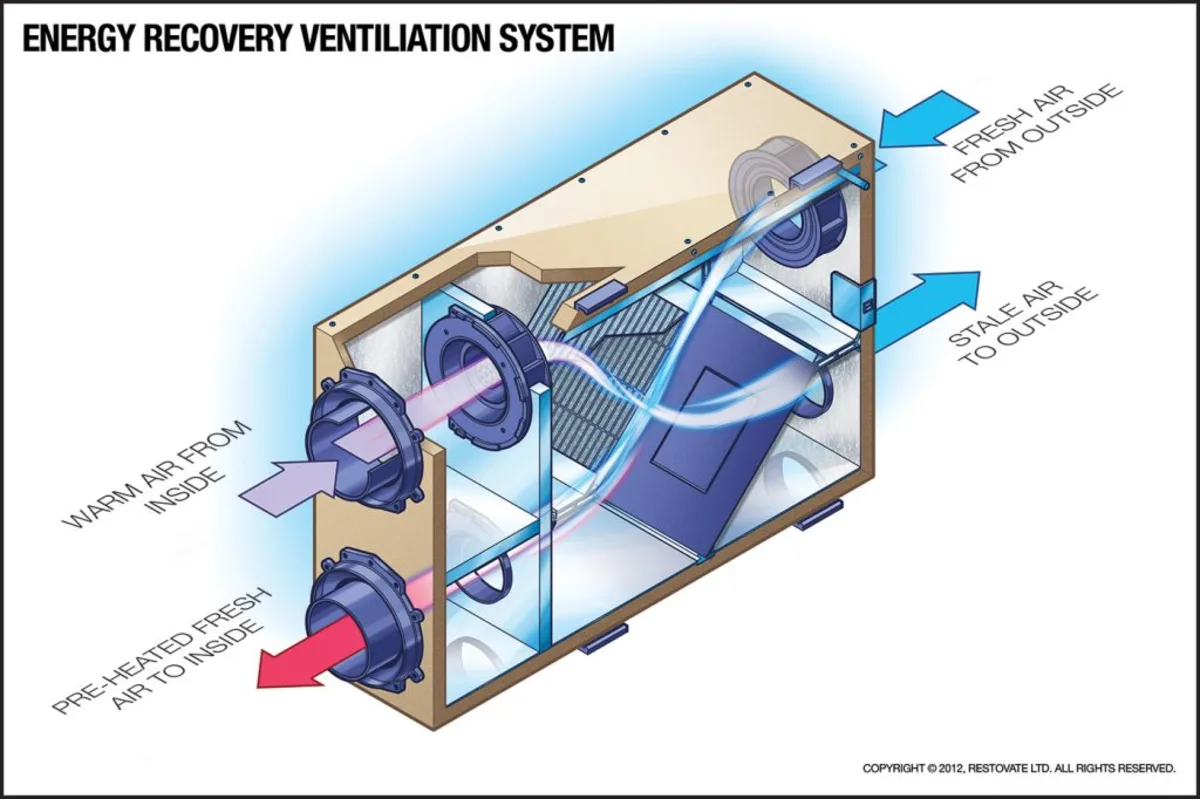In today’s push for healthier indoor air and energy-efficient buildings, the Energy Recovery Ventilator (ERV) has become a key component in both residential and commercial HVAC systems. Whether you’re a homeowner looking to improve indoor air quality or a facility manager optimizing energy performance, understanding what an ERV does and how it works is crucial.
What Is an ERV?
An ERV, or Energy Recovery Ventilator, is a mechanical ventilation system that exchanges stale indoor air with fresh outdoor air while minimizing energy loss. It doesn’t just ventilate—it conditions incoming air by transferring heat and moisture between the outgoing and incoming airstreams. This makes it especially valuable in climates with extreme temperatures or high humidity.
In simpler terms: an ERV helps you breathe cleaner air without sacrificing your HVAC system’s efficiency or your utility bills.
Why Use an ERV?
ERVs are essential in today’s airtight homes and commercial buildings. Contemporary building practices frequently create airtight structures to improve energy efficiency, but this can lead to the accumulation of indoor pollutants, allergens, and moisture. Without adequate ventilation, indoor air quality deteriorates quickly.
Benefits of ERVs include:
- Improved Indoor Air Quality: Continuously removes pollutants, CO2, and odors.
- Energy Efficiency: Recovers up to 70-90% of the energy from outgoing air.
- Humidity Control: Balances indoor humidity, reducing strain on HVAC systems.
- Code Compliance: Helps meet building codes related to ventilation and energy performance.
How Does an ERV Operate?
An ERV system operates through a network of fans, filters, and a heat/moisture exchange core. Here’s a breakdown of how it functions:
Air Intake and Exhaust
The ERV system brings in clean outside air while at the same time venting out used indoor air.
The two airflow paths move through the unit separately without directly combining.
Energy Exchange
Both incoming and outgoing air travel through the central heat exchange component.
During the warmer months, the system operates in reverse, reducing the temperature of the incoming warm air.
In summer, the process reverses, cooling the incoming hot air.
Simultaneously, moisture is exchanged to balance indoor humidity.
Distribution
The conditioned fresh air is then distributed into living or occupied spaces.
Stale air is exhausted outside, keeping indoor environments clean and balanced.
This process runs continuously or intermittently, depending on system design and ventilation needs.
Choosing the Right ERV for Your Home or Building
Selecting the right ERV depends on several factors:
Climate: In humid regions, ERVs can manage moisture better than HRVs (Heat Recovery Ventilators).
Building Size and Layout: Larger buildings require higher-capacity systems.
Occupant Needs: Households with allergies or asthma benefit from high-efficiency filtration.
Integration with Existing HVAC: Some ERVs work as standalone systems; others integrate directly into central HVAC setups.
Leading manufacturers offer ERVs tailored for homes, multifamily residences, and commercial buildings. Look for features like:
- Variable speed motors for energy savings
- Smart controls for demand-based ventilation
- Low-maintenance designs with accessible filters and cores
Installation and Maintenance Tips
Proper installation and maintenance are key to getting the most out of your ERV: acjakarta
- Professional Installation: Always have a certified HVAC technician size and install the unit.
- Filter Changes: Replace or clean filters every 3-6 months.
- Core Cleaning: Depending on the unit, clean the core annually to maintain efficiency.
- Duct Inspection: Ensure ducts are sealed and clear of obstructions.
Routine servicing helps prolong the unit’s lifespan and maintains optimal functionality.
Final Thoughts
An ERV is more than just a ventilation device—it’s a smart investment in indoor comfort, air quality, and energy efficiency. As homes and buildings become tighter and more insulated, incorporating an ERV into your HVAC design isn’t just a luxury; it’s often a necessity.
Whether you’re retrofitting an existing system or planning new construction, an ERV can help you meet health, comfort, and sustainability goals with one solution.
